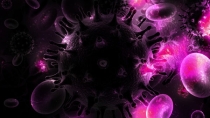
RNA molecules are used as blueprints to make the many proteins in living things. Researchers have found that RNAs can be marked by small chemical tags that can alter their stability or function, but it has been difficult to identify and measure these modifications. This is known as the science of epitranscriptomics, the control of RNA by biochemical modifications.
NIDA recognizes the pivotal role of drug use in the spread of HIV and AIDS, and funds research to inform prevention strategies. HIV, the virus that causes AIDS, is an RNA virus—meaning that its genome consists of a single RNA molecule that makes viral proteins. In this study, NIDA-funded scientists found that the HIV RNA genome has two previously unknown types of RNA marks. One of these marks, known as m5C, is put on the HIV RNA by a protein called NSUN2 methyltransferase. Importantly, when this protein is inactivated, it inhibits the addition of m5C to HIV RNA and results in reduced replication of the HIV virus. This unexpected role for m5C and NSUN2 in HIV replication could serve as a launch point to develop future medications to treat patients living with HIV.
The research was conducted by scientists at the Duke University Medical Center, and the University of North Carolina at Chapel Hill.
Study:
- David G. Courtney, Kevin Tsai, Hal P. Bogerd, Edward M. Kennedy, Brittany A. Law, Ann Emery, Ronald Swanstrom, Christopher L. Holley and Bryan R. Cullen. Epitranscriptomic addition of m5C to HIV-1 transcripts regulates viral gene expression. Cell Host and Microbe.
